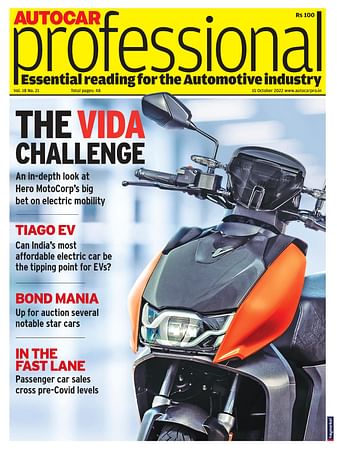EV battery modelling in Ricardo Software 2020.2 release
The new 2020.2 release of powertrain design and optimisation software from Ricardo has new features and capabilities – including for EV battery design – together with improved accuracy and functionality
The second of Ricardo Software’s quarterly product releases for 2020 has brought new capabilities in the area of electrified vehicle powertrains.
With battery systems a key focus of hybrid and electric vehicle development, both the Ricardo VECTIS CFD package and IGNITE complex systems modelling product now provide solutions for optimising battery systems. Crucially, these include modelling of the detailed heat exchange and cell degradation that occurs through use and storage.
In addition, IGNITE also includes new models related to gear shift control which, combined with duty cycle customization and improvements related to modelling of driveline efficiency, enable engineers to optimize drivelines for both conventional and hybrid vehicles.
Building on the results of ongoing Ricardo research, the new 2020.2 release includes several improvements in the accuracy and usability of combustion modelling in VECTIS that will assist in the drive to reduce emissions across all internal combustion engine sectors. This includes improved accuracy of spark ignition modelling for large engines, faster simulations and new detailed kinetics tools.
Significant improvements have also been made to the WAVE 1D gas dynamics and performance simulation tool as well as to its industry-leading real-time equivalent WAVE-RT to enable advanced virtual calibration, including its use in software-in-the-loop (SiL) and hardware-in-the-loop (HiL) environments. These include real time NOx emissions prediction, a new knock detection model and improved sensing of the lambda response. Together with various workflow improvements and combined with usability improvements to WAVE, these mean that WAVE-RT remains at the forefront of delivering real time solutions for SIL and HIL applications.
“I am pleased that we have been able to deliver the new 2020.2 release to Ricardo Software customers,” commented Ricardo Software MD Kimberly Matenchuk. “This new release brings fresh innovations in battery and hybrid vehicle powertrain optimisation, together with significant improvements to our fluid simulation products. The 2020.2 release demonstrates clearly Ricardo Software’s commitment to providing our customers with advanced simulation technologies that help them to develop the cleaner, more efficient and sustainable vehicles of tomorrow.”
RELATED ARTICLES
Sept 2024 From R&D incentives to EV infrastructure: What auto components industry expects from Budget 2024
Sept 2024 From R&D incentives to EV infrastructure: What auto components industry expects from Budget 2024
US car majors hit the brakes on driverless cars
Ford Motor and Volkswagen to close self-driving startup Argo AI, due to lack of technology and clear regulations.
Autoliv and Geely to develop advanced safety tech for future vehicles
Scope of cooperation includes safety for high-level autonomous driving, intelligent steering wheel technology, a 360deg ...






 By Autocar Pro News Desk
By Autocar Pro News Desk
 18 Jun 2020
18 Jun 2020
 5169 Views
5169 Views









